Solar eclipse of April 7, 1940
| Solar eclipse of April 7, 1940 | |
|---|---|
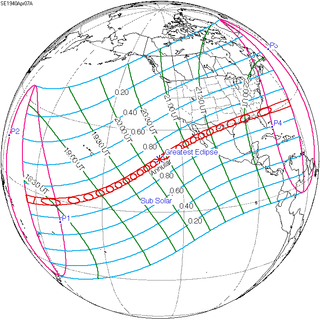 Map | |
| Type of eclipse | |
| Nature | Annular |
| Gamma | 0.219 |
| Magnitude | 0.9394 |
| Maximum eclipse | |
| Duration | 450 sec (7 m 30 s) |
| Coordinates | 19°12′N 128°30′W / 19.2°N 128.5°W |
| Max. width of band | 230 km (140 mi) |
| Times (UTC) | |
| Greatest eclipse | 20:21:21 |
| References | |
| Saros | 128 (54 of 73) |
| Catalog # (SE5000) | 9375 |
An annular solar eclipse occurred on April 7, 1940. A solar eclipse occurs when the Moon passes between Earth and the Sun, thereby totally or partly obscuring the image of the Sun for a viewer on Earth. An annular solar eclipse occurs when the Moon's apparent diameter is smaller than the Sun's, blocking most of the Sun's light and causing the Sun to look like an annulus (ring). An annular eclipse appears as a partial eclipse over a region of the Earth thousands of kilometres wide.
Related eclipses
Solar eclipses 1939-1942
Each member in a semester series of solar eclipses repeats approximately every 177 days and 4 hours (a semester) at alternating nodes of the Moon's orbit.
| Descending node | Ascending node | |||
|---|---|---|---|---|
| 118 | April 19, 1939 Annular |
123 | October 12, 1939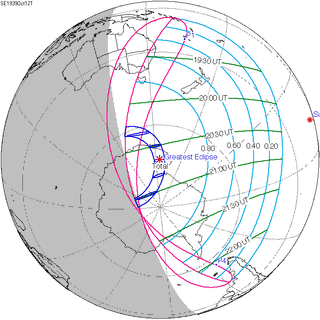 Total | |
| 128 | April 7, 1940 Annular |
133 | October 1, 1940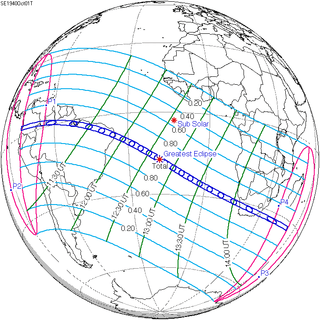 Total | |
| 138 | March 27, 1941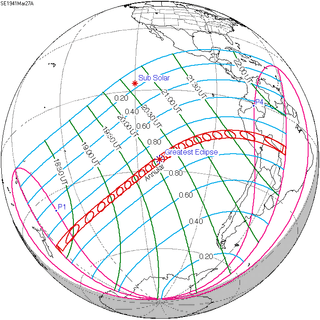 Annular |
143 | September 21, 1941 Total | |
| 148 | March 16, 1942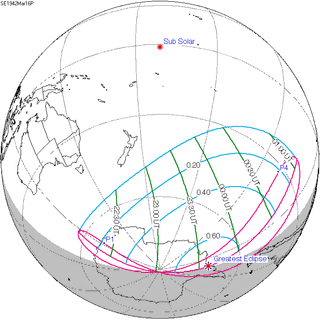 Partial |
153 | September 10, 1942 Partial | |
Notes
References
- Earth visibility chart and eclipse statistics Eclipse Predictions by Fred Espenak, NASA/GSFC
| Wikimedia Commons has media related to Solar eclipse of 1940 April 7. |

